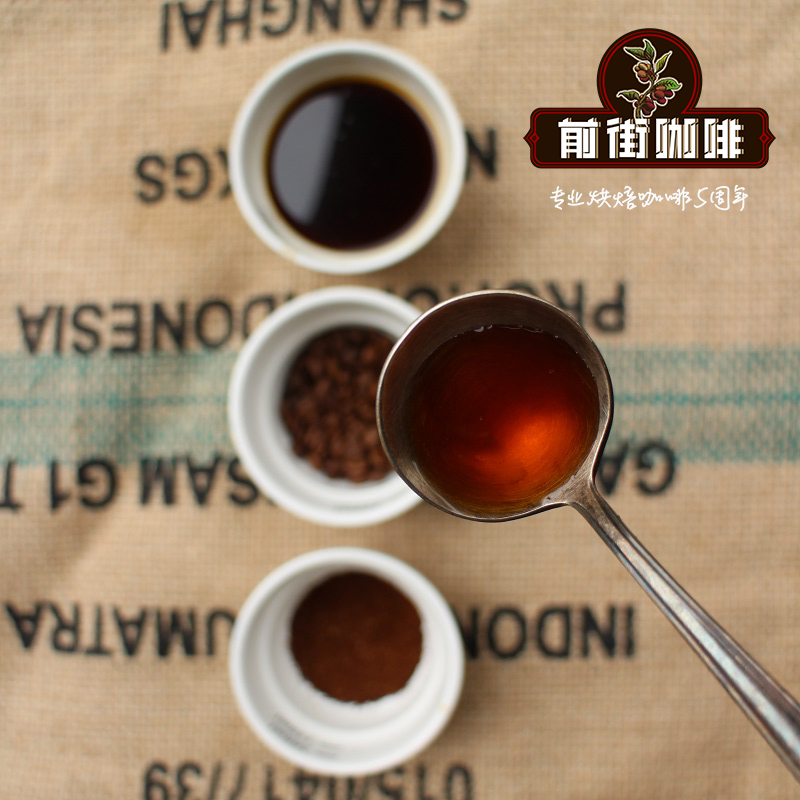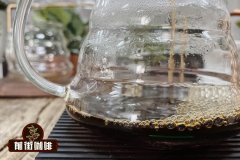How to adjust the brewing method according to the roasting degree of coffee? How to avoid the bitter taste of deep-roasted coffee

Making a good cup of coffee means to balance many factors. In addition to the most common brewing method and the ratio of powder to water, we must also pay attention to the roasting degree of brewed coffee.
You may have found a stable brewing formula with the V60 filter cup, but if you make coffee with different roasting degrees, you may have to think about adjusting the formula. In this article, let's take a look at how to adjust the brewing method according to the roasting degree of the coffee!
What is the difference in roasting degree of different coffee?
Roasted coffee can be roughly divided into light roasting, medium roasting and deep roasting. Maybe you can only make coffee in one way at home, but what is the difference between different roasting degrees of coffee?
In fact, there is no clear regulation for shallow, medium and deep roasted coffee, and bean bakers often define different roasting degrees in their own way, but generally speaking, shallow roasted coffee will retain more of the original flavor of coffee, emphasizing aromas such as flowers and citrus. For deeply roasted coffee, the above aromas will be replaced by chocolate and nut aromas. If the coffee is deeply roasted, it will have a more obvious bitter taste.
Flavor is not the only difference in roasting degree of coffee. The longer the coffee is exposed to heat, the more pores will be produced on the surface of the coffee, so the deeper the roasted coffee is, the higher the solubility is, which is why the deeper roasted coffee is often used to make espresso. Because the extraction time of espresso is very short, the extraction efficiency of deep roasted beans with higher dissolution efficiency is higher than that of shallow roasted beans.
Why do we use different methods to make coffee with different roasting degrees?
A good cup of coffee may come from a good extraction rate. when the beans are roasted and ground, a large number of compounds are released when they come into contact with water. these compounds are first extracted from the aroma and acidity of the fruit. then the sugar of the coffee is extracted to create sweetness, and finally to extract bitterness. So if a coffee is not extracted enough, it will have a sour taste, because the sugar has no chance to be extracted. If the coffee is over-extracted, it may be too bitter to taste.
Because shallow roasted coffee beans have fewer holes than deep roasted beans, the release rate of substances in coffee beans is also slower, which is why shallow roasted coffee is often brewed in slower ways, such as hand-brewed coffee. This brewing method allows water to come into contact with coffee for a long time, unlike espresso, which is extracted quickly. This also means that if you use the same brewing formula to make the same coffee beans with different roasting degrees, you will drink coffee with completely different flavors and tastes.
Sam Koh, a barista and founder of Kaffiend Brews Cafe in Singapore, says light roasted coffee shows a more complex aroma because slower extraction is used to amplify the aroma characteristics. The more deep-roasted coffee because the extraction time is shorter, so it is more difficult to show the same effect, otherwise it will extract the bitterness of the deep-roasted coffee.
How to adjust the brewing formula according to different roasting degrees of coffee
When you figure out the logic of the brewing formula and are ready to try to make a new cup of coffee, how do you adjust your technique to different roasted coffee? In order to make up for the above differences in voids and the extraction rate, some variables can be adjusted.
Grinding thickness
The finer the coffee is ground, the more surface area it will increase, which means that the extraction speed will be faster. If the coffee you usually brew is medium-roasted, you can grind it finer if you want to bake it shallowly now. By the same token, if you usually make more shallow roasted coffee, you should grind it a little thicker when brewing deep roasted coffee.
Marlous Van Putten is the sales manager and barista of the Dutch coffee chain Coffeecompany. "if the coffee beans are lightly roasted, I will grind them finer, while the deeper roasted coffee will be thicker," she said. Because deep-baked beans are easier to extract bitterness, it can lead to excessive extraction if the water is in contact with the coffee for a long time. "
Water temperature
There is no absolutely correct water temperature for brewing coffee (although the Fine Coffee Association does recommend a coffee brewing temperature range of 90mur96 °C), the higher the water temperature, the faster the extraction speed. Some substances will not be extracted at lower temperatures, so the flavor of cold-extracted coffee will be milder and sweeter because of the lack of partially extracted substances.
Water temperature is one of the easiest factors to adjust the flavor of coffee. If you use deep-roasted coffee, it can lower the water temperature and prevent over-extraction, causing the coffee to taste bitter. If you are brewing lightly roasted coffee, you can use hotter water to speed up the extraction.
Marlous said: "usually deeper baked beans will use lower temperature water, while shallower baked beans will use higher temperature water. Special attention should be paid here that if you use high-temperature water to brew deep-roasted coffee, or use low-temperature water to brew shallow-roasted coffee, the flavor of the coffee will not be very good. "
Cooking time
The longer the coffee comes into contact with water, the more coffee will be extracted, and special attention must be paid to the brewing method chosen. For example, espresso must be extracted in a very short time, so light-roasted coffee may not be suitable for making espresso.
When you choose different brewing methods, you will need to adjust the brewing time. For example, hand-brewed coffee requires a slower filling method, while a French filter kettle takes a longer soaking time.
Sam said: "if it is a light roasted coffee, I will let the coffee soak a little longer during the first stage of steaming, which will release more substances and give the coffee more aroma and flavor. "
Other causes of cooking that should be paid attention to
Adjust the brewing factors for different roasting degrees of coffee, in addition to the grinding thickness, water temperature and brewing time mentioned above, there are some factors that will affect the flavor of coffee, but you need to understand how these factors affect each other.
When the coffee beans are kept for a long time and the flavor decreases, oxidation and exhaust will cause the coffee to lose its oil and aromatic compounds, resulting in the loss of taste, aroma and flavor of the brewed coffee. It is usually recommended to buy coffee beans baked within two weeks. The coffee is stored in a sealed opaque container and ground when in use to avoid rapid oxidation of coffee powder.
If your coffee is a little too old, you can adjust the brewing formula to make up for it. Shallow roasted coffee beans can be ground a little finer, increasing the surface area of coffee powder to improve the extraction rate, which can more or less make up for the poor flavor of the beans.
Deep-baked beans that have been kept for a long time will have more pores, thus increasing the solubility, so the beans can be ground thicker, or use lower-temperature water to slow down the extraction rate, so as to avoid the bitter taste of the coffee.
Marlous recommends keeping in mind other variables that may affect the final flavor of the coffee. "the details and process of the water used, the freshness of the beans, the quality of the beans and the cleanliness of the utensils will affect the flavor of the final coffee," she said. "
You may have a good recipe that has been found over and over again, but when you try to use coffee with different roasting degrees, or beans baked by different bean bakers, you have to readjust the recipe. By learning how to adjust the factors (including grinding thickness, brewing time and water temperature), you can get coffee with a good flavor at every roasted bean.
Important Notice :
前街咖啡 FrontStreet Coffee has moved to new addredd:
FrontStreet Coffee Address: 315,Donghua East Road,GuangZhou
Tel:020 38364473
- Prev

Introduction of Yilomba Water washing Plant in Tanzania Flavor characteristics of washed Kent Coffee
The ilomba washing plant in Tanzania is located in the village of ilomba in the Mbozi province of Tanzania, the steep hillside of the Mbeya Heights in the southwest of the country. The ilomba cooperative in Yilomba has 24 members, all of whom are small coffee farmers. In 2000, with the help of Kilicafe (Technoserve), they spontaneously formed groups to improve the quality of coffee.
- Next

An introduction to the producing area of Vivette Nan Fruit Coffee in Guatemala the flavor characteristics of Vivette Nan Fruit Coffee
Vivette Nanguo is the highest-lying and driest coffee-growing area in non-volcanic areas. With steep sharp-toothed peaks and narrow valleys, hot and dry winds from the neighboring Tehuantepec Plain of Mexico blow into the mountains, allowing coffee in this area to be at high altitudes instead of
Related
- Beginners will see the "Coffee pull flower" guide!
- What is the difference between ice blog purified milk and ordinary milk coffee?
- Why is the Philippines the largest producer of crops in Liberia?
- For coffee extraction, should the fine powder be retained?
- How does extracted espresso fill pressed powder? How much strength does it take to press the powder?
- How to make jasmine cold extract coffee? Is the jasmine + latte good?
- Will this little toy really make the coffee taste better? How does Lily Drip affect coffee extraction?
- Will the action of slapping the filter cup also affect coffee extraction?
- What's the difference between powder-to-water ratio and powder-to-liquid ratio?
- What is the Ethiopian local species? What does it have to do with Heirloom native species?

